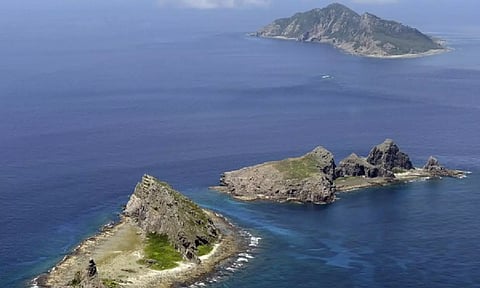

TOKYO: Japan's top government spokesperson condemned a recent incursion by a Chinese military aircraft into Japanese airspace as "absolutely unacceptable" territorial violation and safety threat.
“The Chinese military aircraft's incursion into Japan's airspace not only is a serious violation of our territorial rights but also a safety threat,” Hayashi told a regular news conference. “We found it absolutely unacceptable.”
The Chinese Y-9 reconnaissance plane circled above Danjo Island off the southwestern coast of Japan's main southern island of Kyushu for two minutes, the Joint Staff of the Japanese Self Defense Force said late Monday, adding that officials were analyzing the latest Chinese military activity.
The Joint Staff said Japan scrambled fighter jets and warned the Chinese plane to leave.
Hayashi stressed that China's military activity around Japan in recent years has become “increasingly expanding and intensifying.” Hayashi said Japan will continue watching Chinese military activity and do its utmost to respond to possible anti-airspace violations.
The Foreign Ministry said in a statement that Japanese Vice Foreign Minister Masataka Okano summoned acting Chinese Ambassador Shi Yong to strongly protest the airspace violation. Okano also demanded that China take steps to avoid such incidents.
According to Japan's military, it scrambled jets nearly 669 times between April 2023 and March 2024, about 70% of the time against Chinese military aircraft, though that did not include airspace violations.
Japanese defense officials are increasingly concerned about growing military cooperation between the Chinese and Russian air forces, and China's increasingly assertive activity around Japanese waters and airspace. It led Tokyo to significantly reinforce defenses of southwestern Japan, including remote islands that are considered key to Japan's defense strategy in the region.